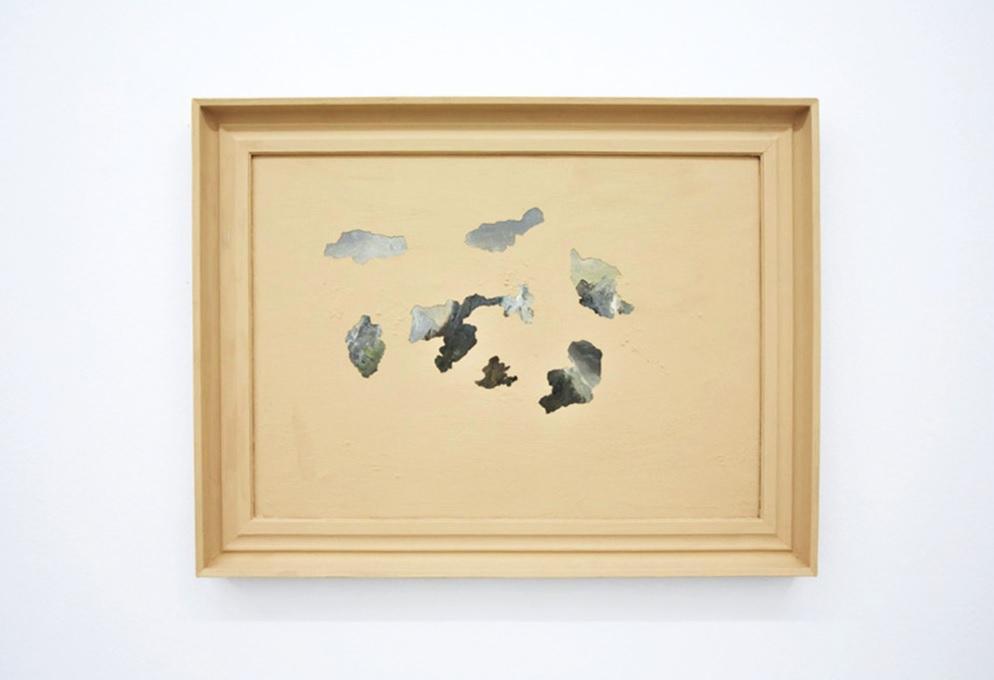
Erkan likes to use metaphors and story telling in her works. What she did in “Where You They Form” exhibition the usage of soil plays a vital role.
As an artist Elif Erkan thinks of her artworks as test-fields, stand ins and capacitors. That point of view gives her tremendous freedom as she creates and thinks about her art. In a way she forms a relation of causality between her works and life. That’s how she treats her artworks as almost as if they are living organs.
“So, in my mind they are subjects rather then objects. I very often ask myself, can a sculpture be depressed, can an artwork be exhausted and how do those things manifest themselves in a material, textural way. For my own work I want my pieces to unfold themselves in different times in different layers pointing toward different narratives that all lead towards a certain core,” she explains.
All her artworks do not need any concept or creative idea to exist. Somehow, all her works exist in virtue of conceptual relations to their own existence. All of them exist with their own causation. That’s how Erkan’s works have an organic character. Sometimes she uses food or life enhancing remedies such as Omega 3 Pills that can change in a course of time and still continue to exist in their own way.
Change comes within daily life and Erkan is fascinated by daily life. In her exhibition titled “Where You They Form” took place in The Pill Gallery in Istanbul, Erkan’s changing element was soil.
“The soil dries and therefore changes in color. This also affects the scent of the exhibition. The exhibition ended up being a synesthetic experience,” she said. In a way the exhibition is able to exist as itself without any intervention.
The soil breaths, reinvents itself and becomes something new each day.
The change also comes with process and everything Erkan does is process oriented.
“A part of that process is also to read, to be invested in pop culture and going through potential materials, sometimes even trash. ‘The pieces of Where You They Form’ go back to 2015, when I did an exhibition titled ‘Standards For Living’ in Brussels. What lead me to produce those pieces back then was my obsession with the 1985 Ron Howard movie Cocoon,” she said.
The power of soil
Erkan likes to use metaphors and story telling in her works. What she did in “Where You They Form” exhibition the usage of soil plays a vital role.
“For me in the exhibition, the soil is the folkloristic Leitmotif. Its material, texture, frame and reference point at the same time. It’s nature is an artificial one romanticizing the idea of nature,’” added Erkan.
In fact unlike everyday artworks we see around us, entitled to prove the deterioration of nature, Erkan’s message is not [in her own words] “what happened to our beloved nature.” But, she wants to say; “Look at the form, look at the materials; decay is as much a nature of tin and plaster as it is of lemons and kale. “Everything flows and is ephemer. All my pieces are in flux,” Erkan added.
Erkan is also very neat and open about the messages and content of her artworks. According to the artist, an artwork should never have one message and its content should never be outshined by the craft it took to make it.
She thinks that artworks should rather pose questions and disrupt and irritate not only the eye but all senses of the viewer. That’s why her recent exhibit in Istanbul is a grammatically wrong sentence; “Where You They Form.”
“A grammatically wrong sentence can sometimes the beginning to a good journey,” she said.
The exhibition proves that it is a good and solid journey understanding life and ephemerality.